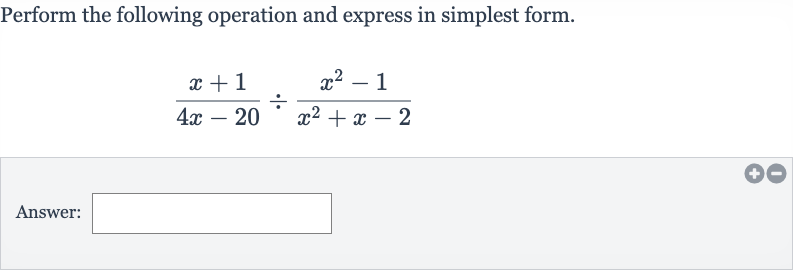Full solution
Q. Perform the following operation and express in simplest form.Answer:
- Simplify Expression: First, we need to simplify the expression by changing the division to multiplication by the reciprocal of the second fraction.
- Factor Polynomials: Next, we factor each polynomial if possible.The first denominator can be factored out as .The second numerator can be factored into .The second denominator is a difference of squares and can be factored into .So, we rewrite the expression with factored terms:
- Cancel Common Factors: Now, we cancel out the common factors in the numerator and the denominator.The in the first numerator and the second denominator cancel out, as do the in the second numerator and denominator.This leaves us with:
- Multiply Remaining Terms: Finally, we multiply the remaining terms.This is the expression in its simplest form.

